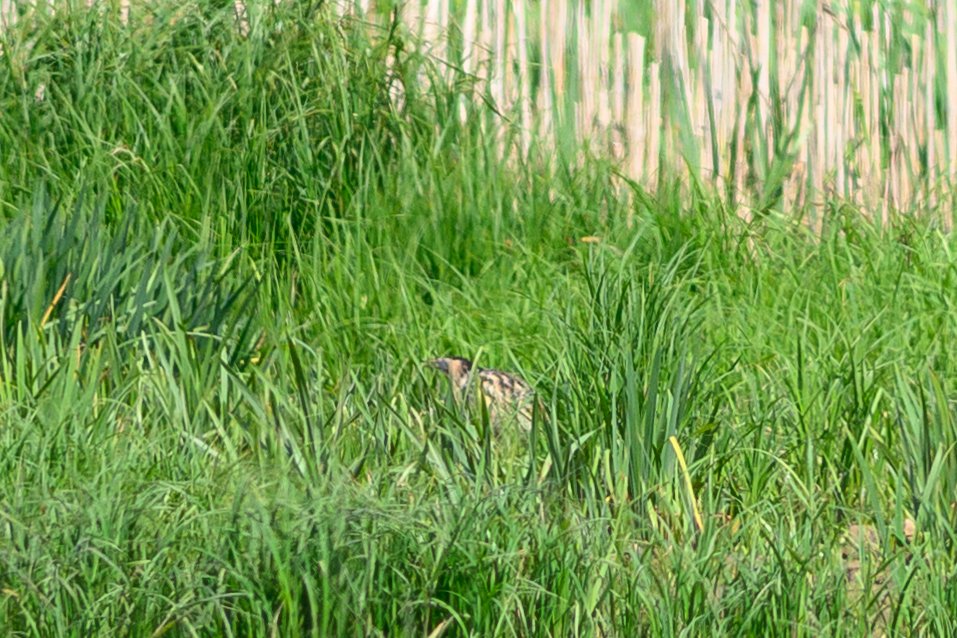A Return to Nature
A cormorant flies low over the water. The two blades of reeds poking out of the water give just the right amount of depth. 1/3200s 300mm F2.8 ISO 160.
Last month was my birthday and for my day off I decided to do something I don’t often get the chance to do as of late, birdwatching & bird photography. As I’ve mentioned in a previous blog, nature photography was how I got started with this hobby (and now profession) but these days the subjects in front of my camera tend to be cars or people. What made me even more keen was that I wanted to properly test out my Nikon Z8 with its new bird-tracking autofocus when coupled with my F Mount 300mm F2.8 lens. Would having an adapted lens cause me any issues with focusing? I headed to WWT Welney on the Norfolk border to find out.
Swallows - heralds of summer. 1/2000s 300mm F2.8 ISO 500.
Looking high up into the sky we spotted a couple of Hobbys which must have been hunting for insects. Despite being far away I did manage to get this record shot with a lot of cropping. 1/3200s 300mm F2.8 ISO 500.
A black-tailed godwit which rivals the avocet for being the prettiest wader at WWT Welney. 1/3200s 300mm F2.8 ISO 250.
A pair of common terns rest on a man-made island to protect their nests from predators. 1/2500s 300mm F2.8 ISO 250.
The answer to that proved to be no but I did struggle with autofocus a lot more than I had expected. Although I believe the issue lay in my lack of experience with using the autofocus systems of the Z8, which are very different from my old D850. The tracking autofocus works well when you can fill a reasonable portion of the frame but when you are dealing with small birds at distance the camera often became confused as to what it was supposed to be focusing on. Though you never have enough reach in bird photography, using a 300mm lens on a full frame body really didn’t get me anywhere near close enough most of the time. It did help jumping into DX crop mode, which does work well given the 45.7-megapixel sensor, and by homing in on a smaller field of view the autofocus did perform a little better. I do hope one day to own a Z mount 400mm or longer but given the cost of those lenses and that they don’t fit into my professional work, it’ll be some time before I pick up one of those.
Small birds like this whitethroat proved difficult to track at distance with the Nikon Z8. Sometimes I got lucky and they came a little closer. 1/2000s 300mm F2.8 ISO 640.
It was much easier photographing this sedge warbler which was too busy singing to be flitting around. 1/2000s 300mm F2.8 ISO 320.
As was the case with this reed warbler which I managed to capture mid-song. 1/2000s 300mm F2.8 ISO 125.
And to finish off this singing trio is a male reed bunting. 1/2000s 300mm F2.8 ISO 125.
The day itself was very pleasant and we were blessed with good sunny weather. Earlier in the year the excessive amounts of rain we’d had over winter had raised the water levels too high for the wading birds and flooded a lot of the paths. Thankfully much of this water has receded giving good access and the waders an opportunity to feed. The highlight of the day by far was hearing and seeing one of Britain’s most elusive birds – the Bittern. There was a time a few decades ago when the Bittern was facing extinction in the UK (for the second time), but conservation efforts have boosted numbers to their highest levels since the Victorian period. At first, we simply heard the booming call of a male which can travel great distances, but a stroke of luck meant I was looking in the right direction when the bird finally decided to make a dash for it. As it was so far away, I didn’t manage to get any good photos but it’s always good to have a record shot.
It’s a terrible photo but it’s a photo of a bittern nonetheless. It was only the second time I’ve ever seen one and they are usually very elusive. 1/2000s 300mm F2.8 ISO 125.
I took several shots of this black-headed gull but my preferred one was this with an entirely green background. 1/2000s 300mm F2.8 ISO 500.
Best known as the symbol of the RSPB, the avocet is one of the most well known waders in Britain even if it is not often seen outside of nature reserves. 1/2000s 300mm F2.8 ISO 125.
I do enjoy this kind of photography and it once again reminds me that I need to find the time every now and again to go do it. While currently holding membership for both the RSPB and the WWT I have even more incentive to get out there and hopefully I can enjoy a few more quiet moments with the birds over the summer. Though having said that I could also do without the temptation to buy another large telephoto lens…
A couple of cows grazing on the nearby slopes. 1/2000s 300mm F2.8 ISO 125.
Tree sparrows are one of my favourite birds as they are just so handsome. Sadly their numbers have declined massively over the past few decades and are now a rare sight in Britain. 1/1250s 300mm F2.8 ISO 125.
If you enjoyed this blog then please consider leaving a tip below.













